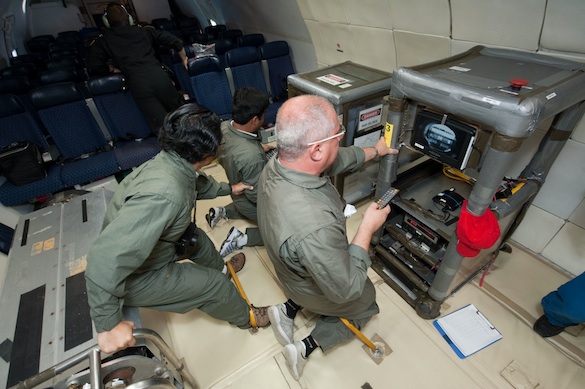Electric Field Effects on Pool Boiling Heat Transfer
PI: Jungho Kim, University of Maryland - College Park, Paolo DiMarco (Co-I), University of Pisa
PI: Jungho Kim, University of Maryland - College Park, Paolo DiMarco (Co-I), University of Pisa

- TA14 Thermal Management Systems
Previous measurements have shown that heat transfer in boiling in microgravity can be higher than that in earth gravity at low wall superheats due to an increase in the number of nucleation sites on the surface, with a corresponding decrease in the critical heat flux. The measurements to date indicate that critical heat flux in microgravity under saturated conditions decreases to roughly 30% of that in earth gravity. Based on the remarkable improvements accomplished under terrestrial conditions, the use of electric fields to replace the gravitational body force shows great potential to increase the amount of heat that can be transferred from a surface in microgravity. This experiment describes work where local heat transfer is measured simultaneously at many points on the heater surface in an effort to determine how boiling heat transfer is affected by the missing gravity and as an additional parameter by the electric field.
Experiments will be carried out from the nucleate boiling regime through critical heat flux into the transition boiling regime. Heat transfer data will be obtained at various gas concentrations and/or bulk fluid subcooling levels with and without electric fields using a microheater array.
The primary rack (see below, left rack) contains a sealed chamber containing about three liters of n-perfluorhexane at 1 atm (boiling temperature is 56°C), a microheater array to measure heat transfer distribution during boiling, a rack of electronic feedback circuits, two 30 Hz video cameras, a computer, and a LCD display. All components are contained within a Vertical Equipment Rack (VER) provided by NASA and designed for use on the parabolic aircraft. The secondary rack (right) contains a high-voltage power supply for the electric field measurements, and a triple output power supply, and a 28 VDC power supply. The components are contained in an AMCO 50” Equipment Rack (AER) provided by NASA and qualified for parabolic aircraft flights.

Technology Details
-
Selection DateAFO1 (May 2011)
-
Program StatusCompleted
- 1 Parabolic
Development Team
-
PIJungho Kim
-
PI Organization
-
Co-IPaolo DiMarco
-
Co-I OrganizationUniversity of Pisa
-
SponsorUniversity of Maryland
-
More Information

